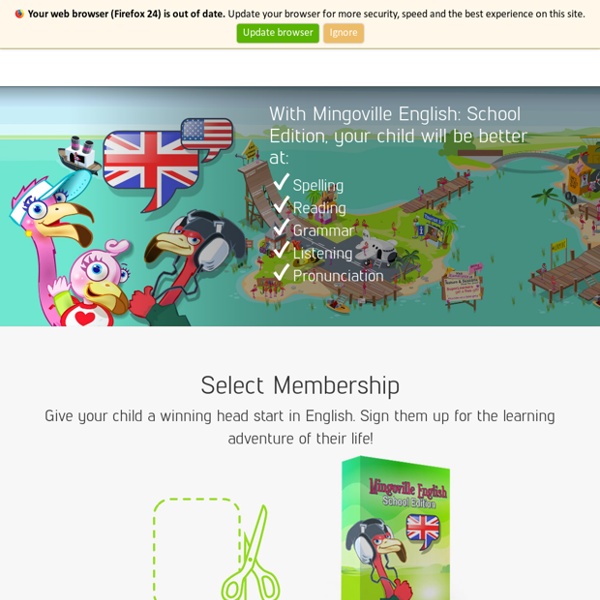



English language learning games ESL/English learning games on Digital Dialects are completely free to use, do not require registration, and are designed for ESL students of all ages. Each ESL revision topic includes vocabulary lists and practice games with audio for teaching correct pronunciation. Materials are of use to beginner level English as a second or other language students, though those with some familiarity with the language may wish to try the English/ESL spelling games. Games for English as a second language include: Numbers in English - learn the English numbers from 1-12, 13-20 and 0-100. Arithmetic games in which you add the English words for numbers together to choose the correct answer.
Tools for Educators - free worksheet templates, printable game templates, 100% customizable worksheet makers with images! Hang Mouse Word Game Choose a topic and pick letters to figure out the word. Hangmouse is an amusing game. The game is quite similar to the old fashioned game that asks the player to guess the letters in a word. The player gets only a limited number of guesses before the stick man is revealed and the game is over. HangMouse is proprietary game owned by Vkiz Inc and used on SpellingCity.com, LearningGAmesforKids.com, and Vocabulary.co.il. Sorry, this is a flash-based game that requires Adobe Flash Player. Many of these games will run on mobile devices with VocabularySpellingCity apps. For Apple devices Available for Android Learn More about www.VocabularySpellingCity.com! Teaching spelling and vocabulary is easy with VocabularySpellingCity!
Primary History - Romans - Invasion Roman Roads | Teaching Ideas The Romans were famous for their roads, and this page describes how Roman roads were built, and how you could use the topic in the classroom. The Romans built roads so that the army could march from one place to another. They tried to build the roads as straight as possible, so that the army could take the shortest route. How the Road was Built... 1) First, the army builders would clear the ground of rocks and trees. 2) Next, they put in big stones, pebbles, cement and sand which they packed down to make a firm base 3) Then they added another layer of cement mixed with broken tiles. 4) On top of that, they then put paving stones to make the surface of the road. 5) Kerb stones were put at the sides of the road to hold in the paving stones and to make a channel for the water to run away. Activities 1) Print the diagram below and photocopy it. The above activity can also be found on a worksheet below. 3) Give the children a copy of a map of Britain.